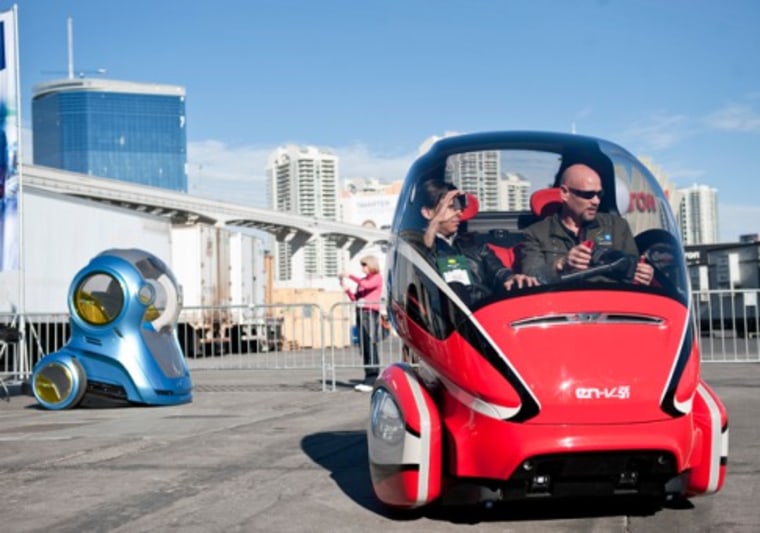Lovers of British autos rejoice: Jaguar has announced plans to build a 200-mile-per-hour hybrid supercar.
The C-X75 will go 0-60 mph in 3 seconds (0-100mph in 6 seconds) and have an electric-only range of about 30 miles. It will be made in the U.K. in a partnership with Williams F1, a Formula One engineering and racing team. Only 250 will be made, with a price tag of $1.1 million.
Jaguar has declined to say when it will start producing the C-x75 (it has already started a list for those interested in buying) but it's safe to say no one will be driving the C-X75 anytime soon.
The same goes for a hybrid Ferrari and a line of Toyota Prius hybrids in different sizes and configurations — but they're all certainly on the works. They may even become common sights on the road within the next decade.
Forbes.com slideshow: 10 cars you may drive in 10 years
One problem, many solutions
To compile this list of vehicles likely to hit dealer lots within 10 years time, we spoke with automakers about the concepts and prototypes they're working on now. Chris Borroni-Bird, director of advanced technology vehicle concepts at General Motors, and Mike Shulman, technical leader for Ford's active safety research and innovation program, shared insights into technologies they're developing that could become mainstream in the next decade.
Borroni-Bird and Shulman expect the industry to go through dramatic changes in the next couple of decades.
"If Henry Ford came back and looked at a car today, he'd say it's different but it's not that different," Shulman says. "The basic idea of the car is still there now ... but a lot is going change."
Automakers are working to answer one central question — how to provide sustainable transportation for people worldwide — but they're finding different solutions. GM is developing bio-fuel, hydrogen and pod cars for mass-transit and urban areas in Asia; Rolls-Royce is experimenting with a plug-in electric Phantom. Ford is developing electric, hybrid and super-efficient gasoline engines, each to be used for specific applications.
"Each of these different options has a role to play," Borroni-Bird says. "Rather than one engine supporting all different needs like has happened for the last 100 years, over time there will be more diversification of propulsion systems and energy sources. "
Forbes.com: The next wave of green cars
Talking cars
The way cars operate will also change: 10 years from now, many will use wireless signals to communicate with other vehicles on the road, therefore avoiding crashes and gridlock.
The change will be like moving from a PC to an iPhone. Your current car is like a 1980s desktop computer: large and isolated with no inter-communication between units. The vehicles of the future will be like smartphones: small, wireless and totally networked with each other.
"That's what's needed in urban areas to reduce congestion," Borroni-Bird says. "It's not enough to make vehicles safe and clean, which is what we need here in America where land is plentiful. In really dense cities, if you get stuck in traffic and you can't find anywhere to park or it's extremely expensive to park ... you'll want another kind of vehicle."
Bottom line: Expect to see a gradual move away from the internal combustion engine (it's not going away all together) toward a number of different fuel systems including diesel, biofuel, hydrogen, compressed natural gas and electricity. And take comfort in the knowledge that even though they're undergoing a few changes, top brands like Porsche, Mercedes-Benz and Ferrari won't lose their high-performance edge.
Some things never change.
More from Forbes.com:
